You can observe plenty of different colors in the natural world, that’s what makes it so beautiful and wonderful to look at and admire. In this article, we’re taking a look at some of the most interesting bright green plants that have a bright green color on them. Bright Green Plants
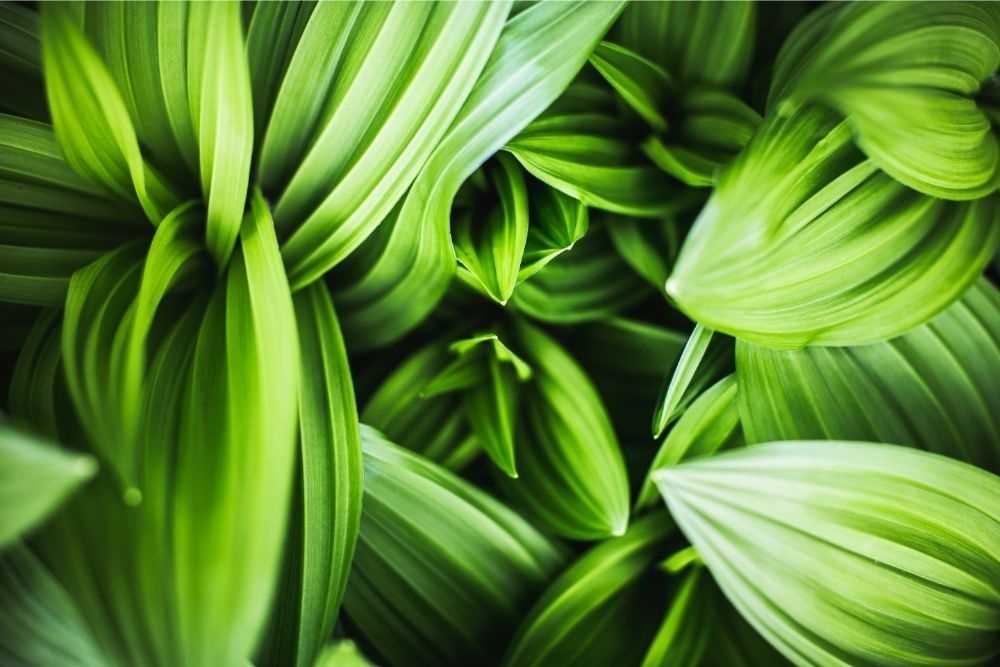
However, the most common color we see in the plant kingdom is, by far, green. Various shades of green cover pretty much every part of the world in the form of trees, grass, flowers, and all kinds of other plants.
Hopefully, you’ll see something that you might even want to add to your own backyard!
1. Ancot (Cotinus Coggygria)
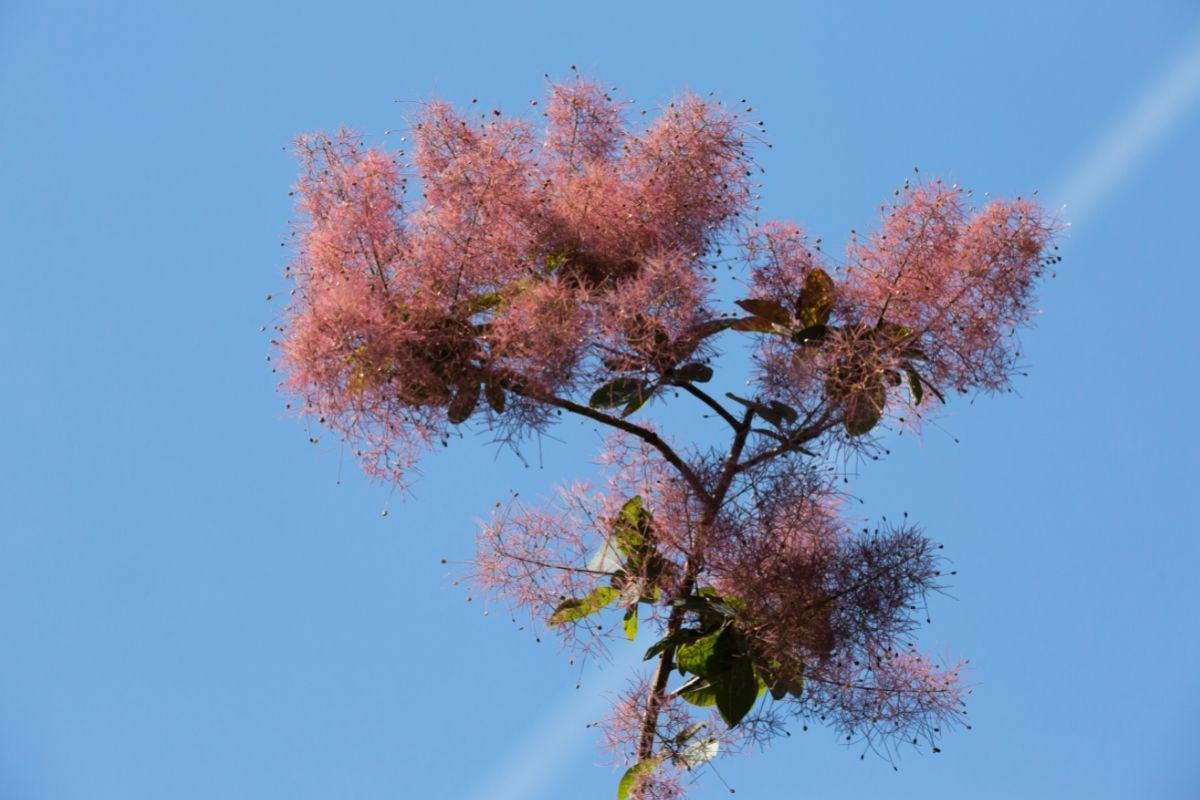
The ancot plant itself is actually a cultivar of one called the Eurasian smoketree, which boasts a wonderful reddish-purple color on its leaves. However, the ancot cultivar sports distinctly bright green leaves and makes for a lovely addition to a backyard or as an indoor potted plant.
The plant is native to Southern Europe and parts of Asia. In fact, it can even be seen growing as far East as the Himalayas and China.
It’s a deciduous shrub with branches that spread out fairly wide but only amassing a maximum height of around 23 feet.
2. Lemon Lime (Nandina Domestica)
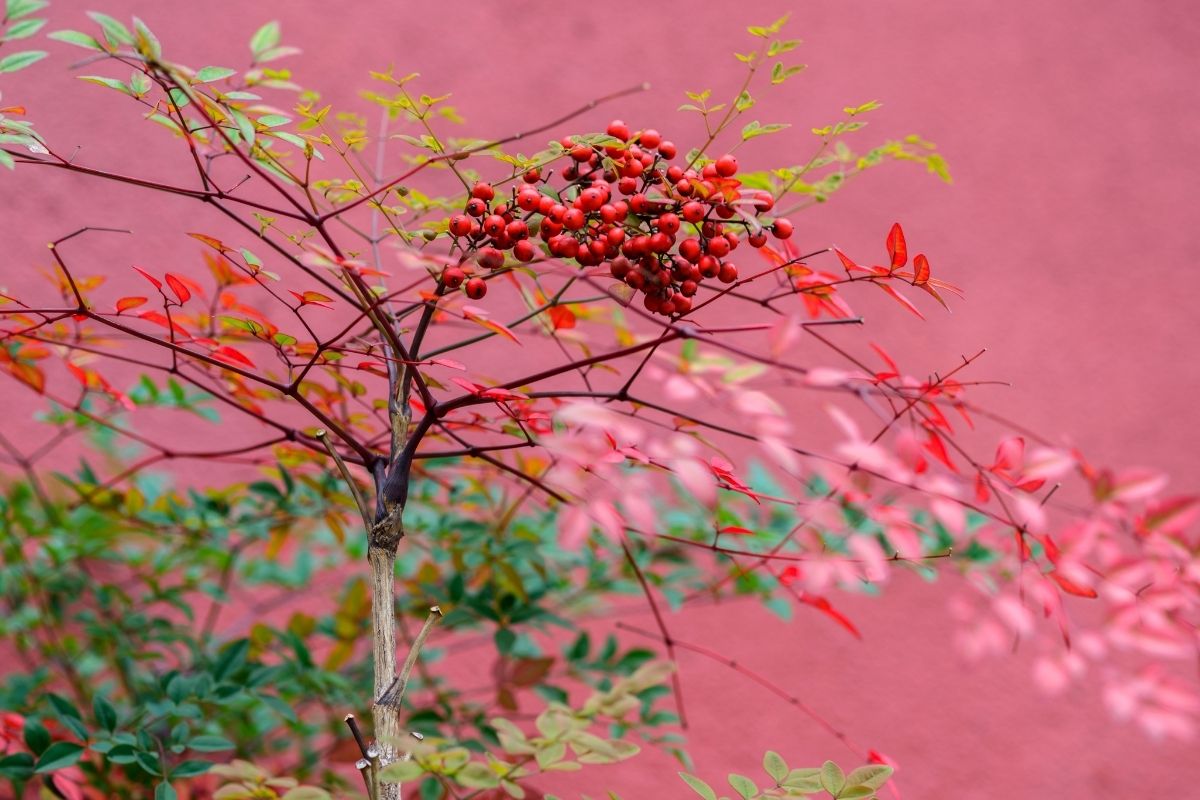
Again, this particular plant is a cultivar of nandina domestica, which is a flowering plant native to Eastern Asia.
With alternative names like ‘sacred bamboo’ and ‘heavenly bamboo’, you’d be surprised by their distinctly leafy appearance. In fact, nandina domestica is an evergreen shrub that sports large, bushy branches and even grows small red berries.
There’s a wide variety of cultivars that exist for this plant but the lemon-lime version transforms into a wonderful chartreuse color during the summer which casts a bright spark of green among other darker green leaves around it.
However, it should be noted that this plant is extremely toxic for birds and other animals to eat so you should be very careful about planting it around any friendly wildlife you might have living around you.
RELATED: Maranta Lemon Lime: An Easy to Follow Care, Propagation, and Watering Guide
3. Hellebore (Helleborus Foetidus)
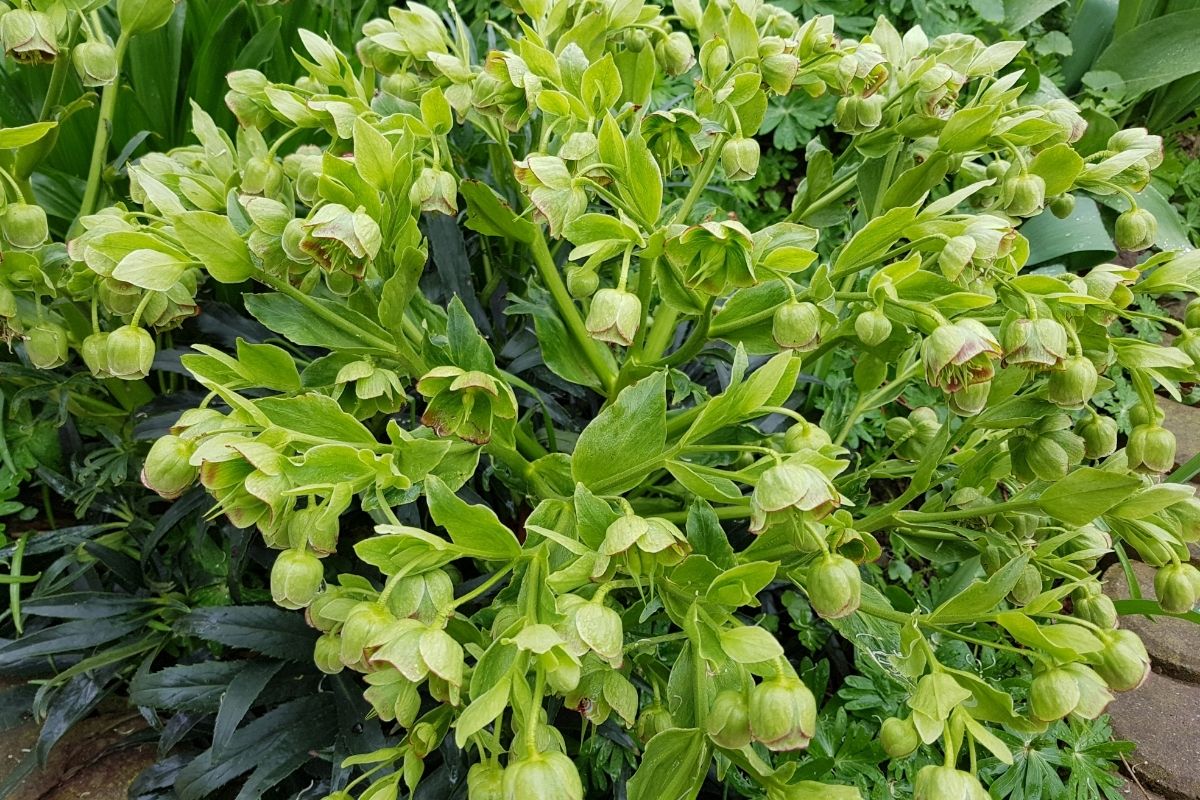
This plant (sometimes referred to as a ‘stinking hellebore’) is a species of flowering plant in the buttercup family. Indeed the flower does produce a similarly cup-like shape as a normal buttercup would but the overall appearance is distinctly different.
The flowers usually grow in a yellowish-green hue but are known to have some purple tinges at their edges when fully grown.
They are a great friend to bees and other insects, so growing them in your backyard could easily attract plenty of pollination for other plants.
The appearance of this plant may not be to everyone’s liking but they don’t take up much space in a flower patch and can work wonders for the other flowers nearby.
4. Citronelle (Heuchera Villosa)
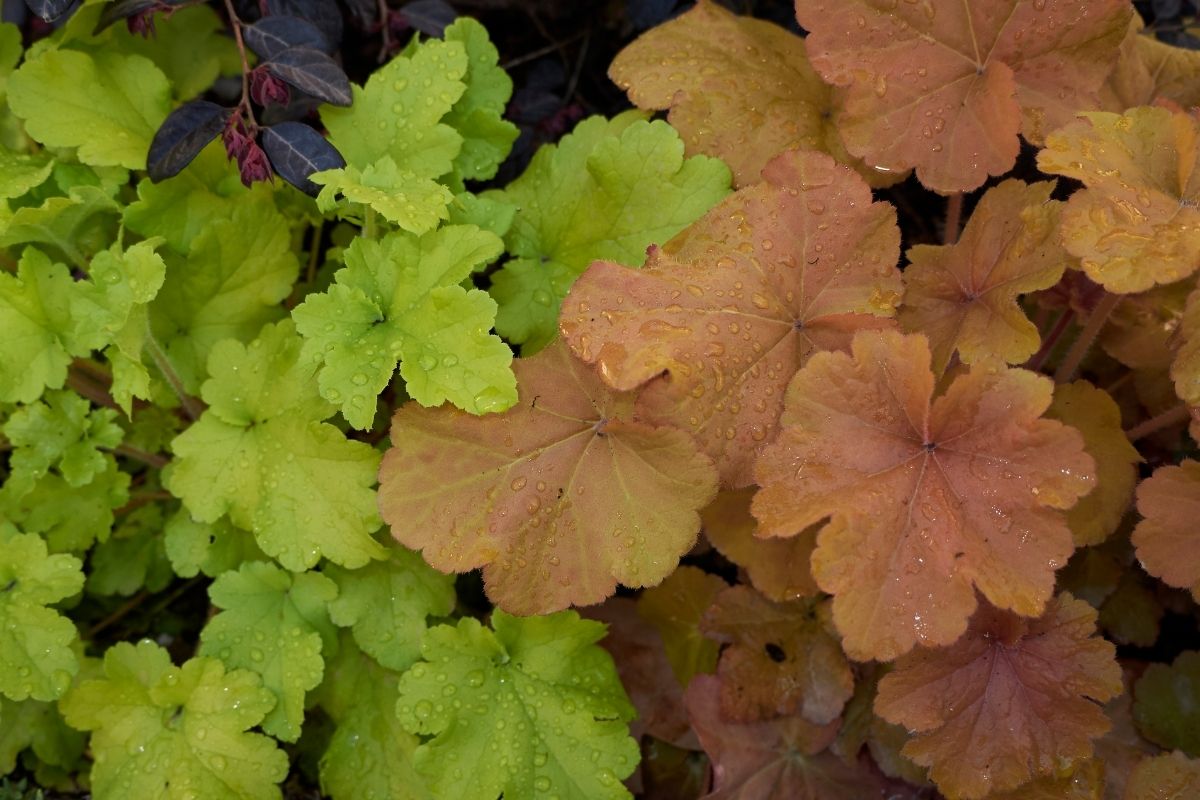
If you’re looking for a plant that will add some bright colors to your backyard, the citronelle (heuchera villosa) is a pretty good one to go for.
This perennial forms basal mounds of large, bushy leaves which form a somewhat globe-like shape above the soil.
The true appeal of having this plant around is its consistently luminous green color throughout the summer. Having such bright colors around like the leaves of this plant works excellently to complement nearby flowers with a vast array of bright colors.
5. Limelight Licorice Plant (Helichrysum Petiolare)

Native to South Africa, the helichrysum petiolare plant is a white flowering plant that produces fuzzy grey-green leaves and white flowers.
The limelight cultivar of the amusingly named licorice plant produces a much brighter green shade on its leaves.
Interestingly, in the plant’s homeland of South Africa, it is used to make soft, aromatic mattresses and other bedding items.
It is also said to have some medicinal uses too and is used as an anti-inflammatory agent.
However, perhaps the most curious use for this plant is in ritual ceremonies, where it is burned indoors to produce aromatic smoke.
6. Anna Van Vloten (Thuja Occidentalis)
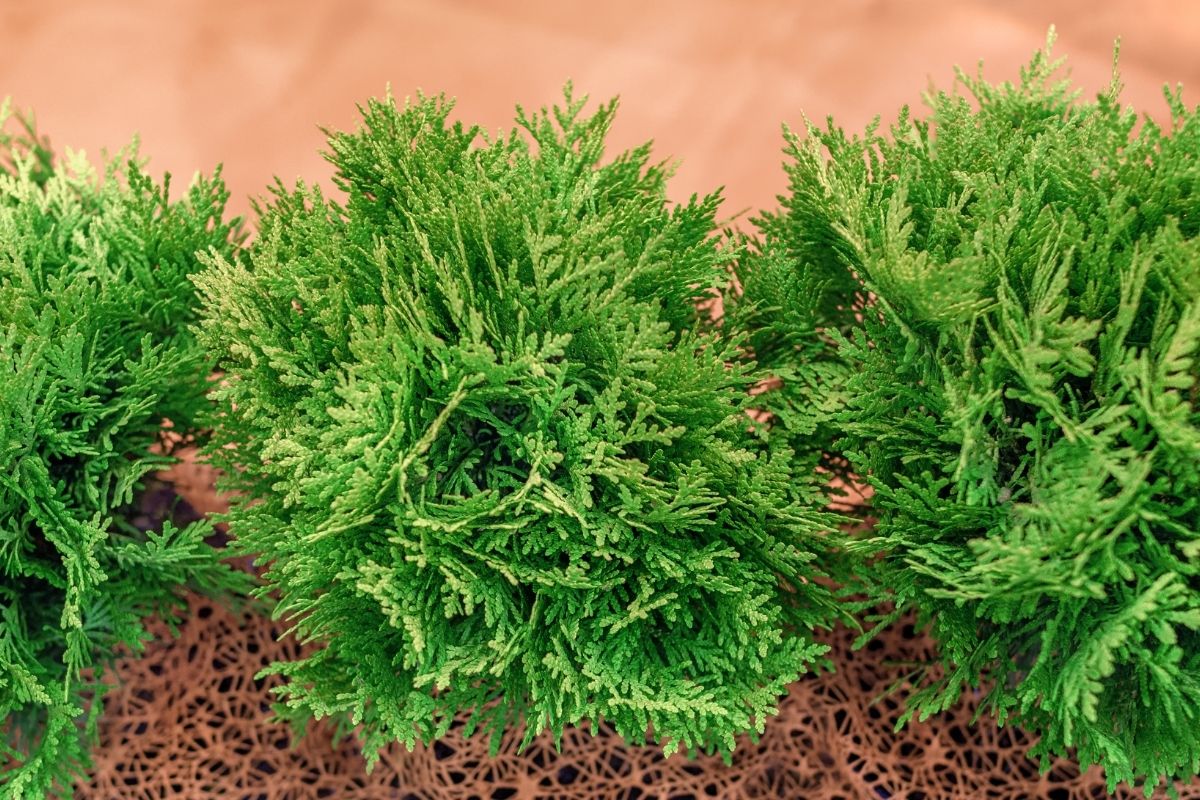
The Anna Van Vloten is another plant on our list that is a bright green cultivar of a wider species.
The thuja occidentalis is an evergreen coniferous tree that is native to Eastern parts of Canada and the Northern regions of the United States.
Despite its alternative name, ‘northern white cedar’, this tree boasts some gorgeous bright green foliage and a deep brown trunk.
This might not be the sort of thing that will grow too easily in your own backyard, as it can reach heights of up to 125 feet. However, they do look wonderful in their masses in the forests of North America.
7. Wintercreeper (Euonymus Fortunei)
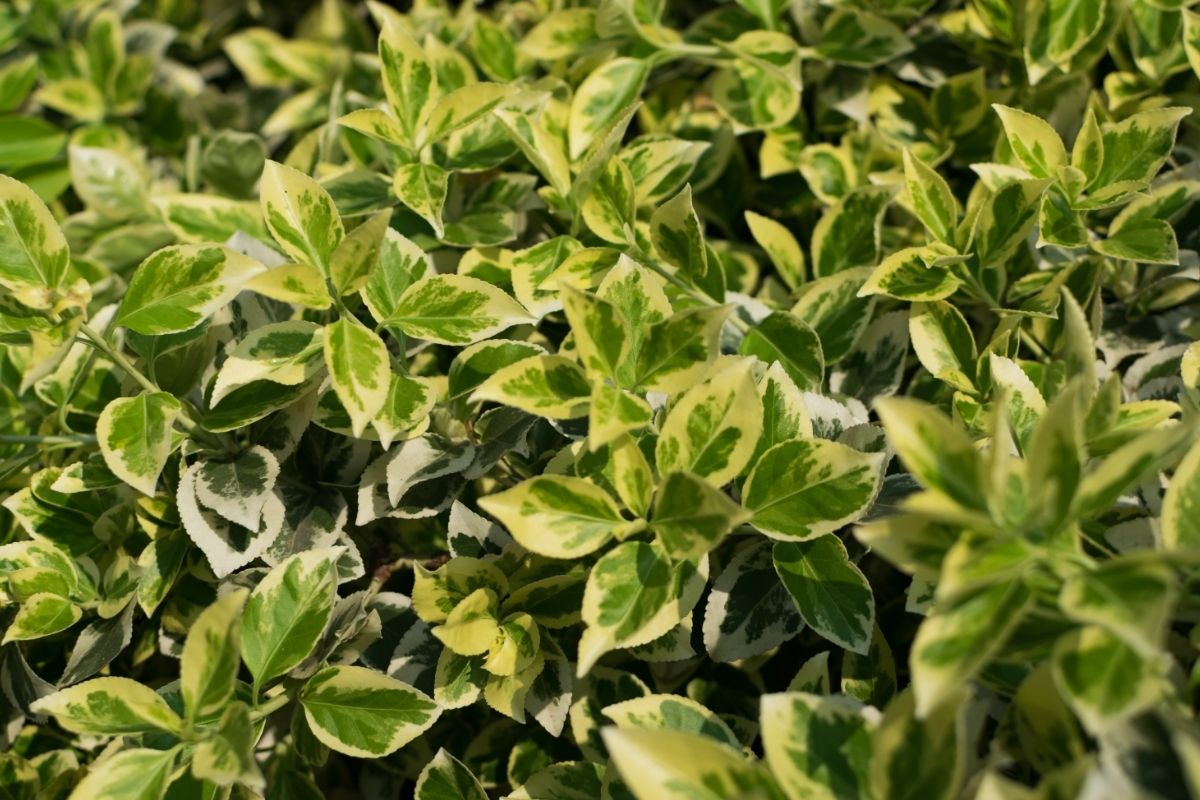
The wintercreeper is a flowering plant that is native to east Asian countries like China, Japan, and Korea.
One of its alternative names (Fortune’s spindle) comes from the Scottish botanist and explorer, Robert Fortune.
You’re unlikely to find this plant growing anywhere in the United States as it can very damaging to other plants that are indigenous to North America.
However, this evergreen shrub produces small, bright green plumes of leaves with some beautiful flowers at the center of clusters.
It grows like a vine and is said to be very similar to ivy in the way it latches onto nearby trees for support as it grows.
8. Lady’s Mantle (Alchemilla Mollis)
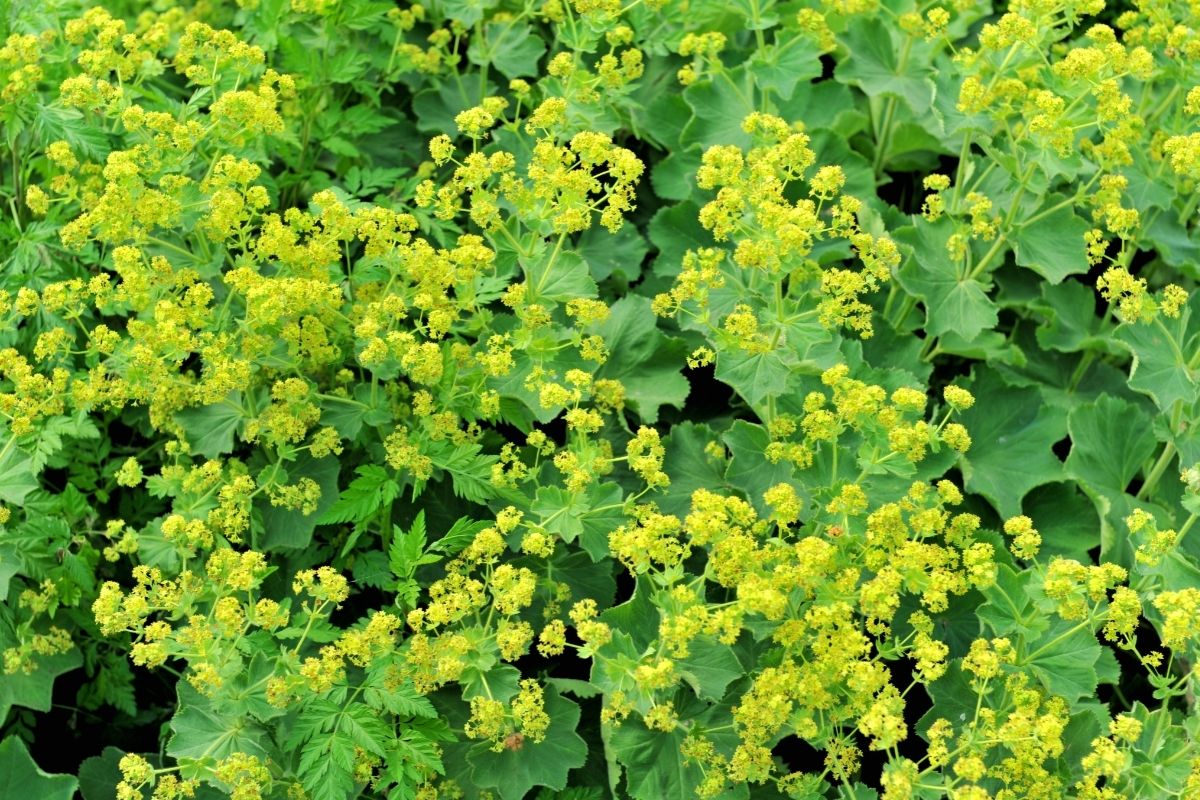
The lady’s mantle is a species of flowering plant in the Rosaceae family. It is a herbaceous perennial that you’ll find growing most commonly across Southern Europe.
The most common usage of this plant is as a decorative, ornamental item. The distinctly chartreuse-colored flowers give it a charmingly bright aesthetic that makes them very popular for interior decoration.
It is not clear exactly whether or not this plant has ever been used for medicinal purposes because sources disagree with its history.
However, in the modern-day, it makes a wonderful addition to anybody’s backyard or home.
9. Japanese Forest Grass (Hakonechloa)
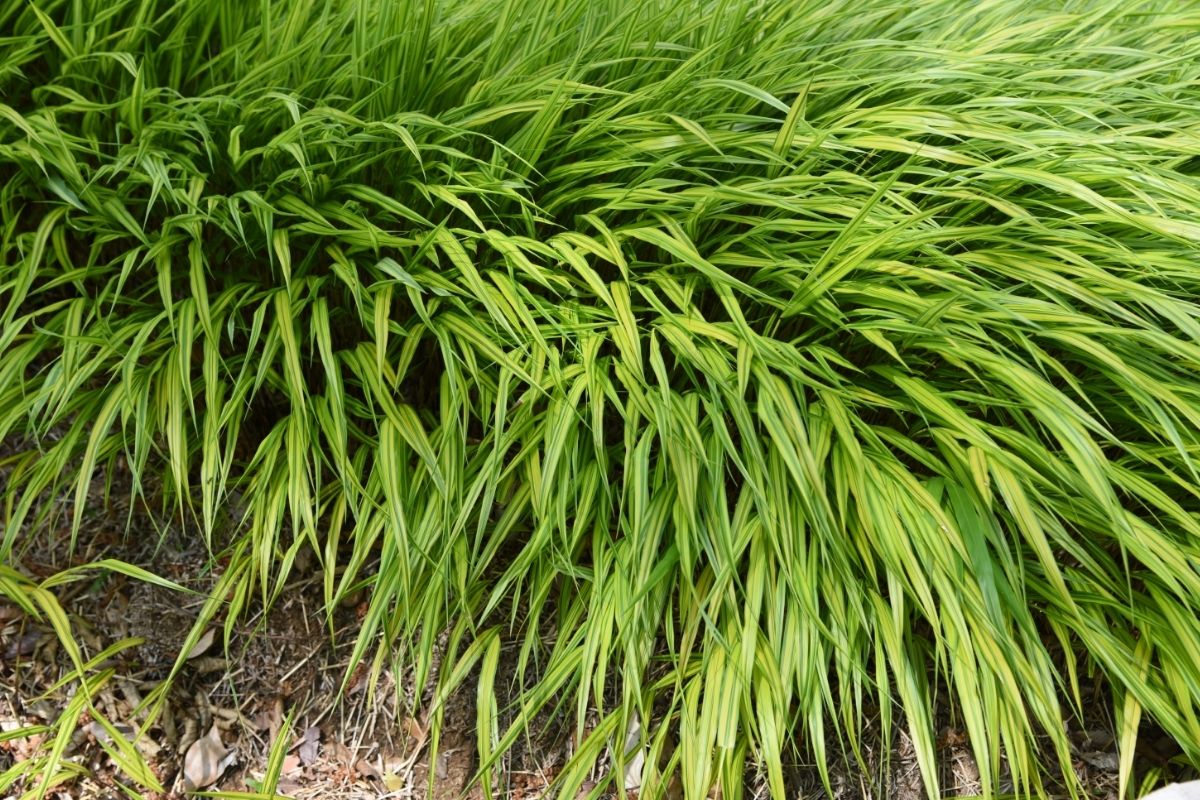
As the name suggests, this plant is exclusively native to Japan. And is even endemic to this region, meaning one can only track it back to this country in its origin.
It is a genus of bunchgrass and sports a distinctly grassy, bushy appearance. The plant doesn’t grow to particularly great heights but does spread itself out very wide.
The leaves are fairly thin and papery, almost resembling some forms of bamboo, though these leaves are much more flexible.
10. Lime Frost Columbine (Aquilegia Vulgaris)

The plant known as common columbine is a herbaceous perennial flower. It can grow to around 3 feet tall at full maturity.
Varieties of this flower can grow in shades of purple, blue, pink, and white. Though the lime frost cultivar grows a bright green flower.
The plant is native mainly to European countries. But has also been to parts of North and South America, as well as Asia in recent decades.
Sadly, all parts of this plant, including the seeds are highly poisonous. Meaning growers must exercise caution when planting them in their backyard.
11. Ogon (Acorus Gramineus)
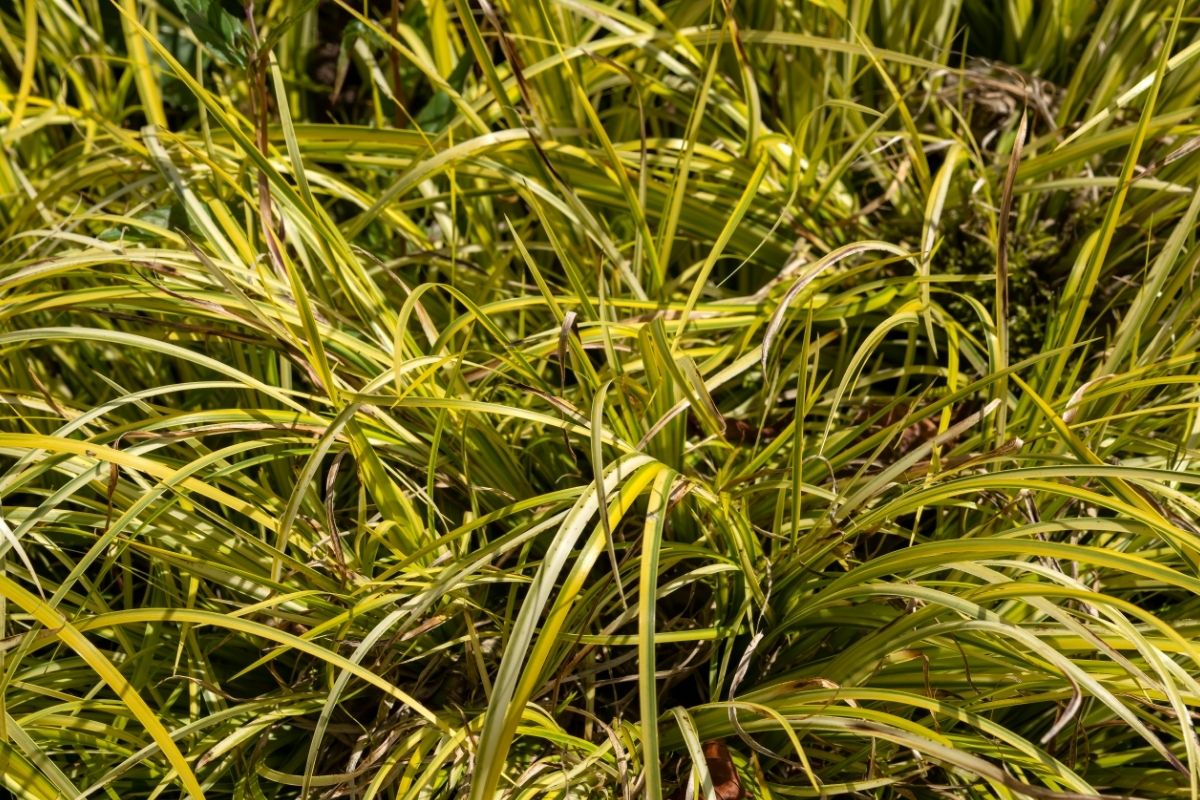
This compact semi-evergreen forms grass-like clumps. That can be around a foot tall and sport bright yellow and green striped leaves.
The foliage appears at its brightest around spring and summer and will provide a small. But a powerful splash of bright color to your backyard.
They don’t take up too much room, tending only to spread as wide as they are tall. Meaning you can fit these plants easily around others or in a flower patch.
12. Green Lace Primrose (Primula X Polyanthus)
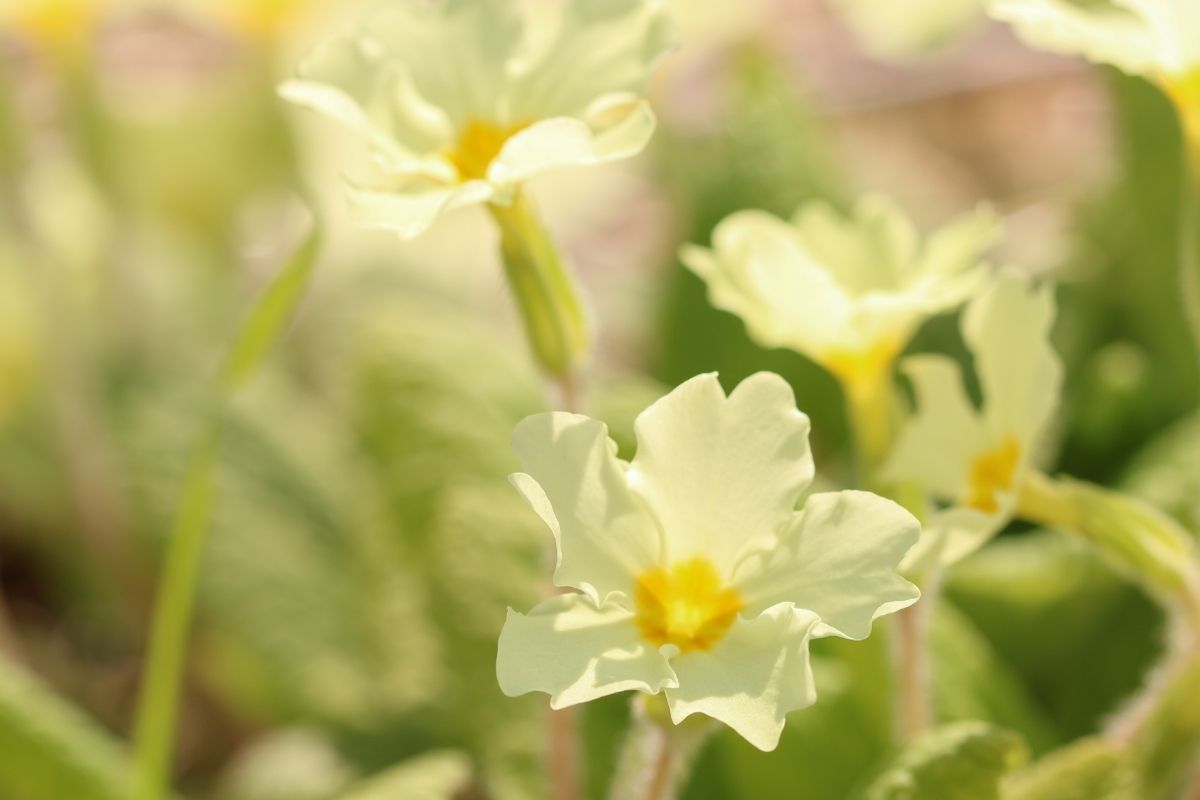
You’d be forgiven for mistaking this plant for some kind of vegetable if you saw it growing in someone’s backyard. But it’s actually a delicate flower.
Primroses can grow in a variety of different colors, covering pretty much everything on the spectrum!
However, the green lace variety forms into a charmingly bright green flower with tinges of yellow emerging from its center.
The flower is popular across North America and Europe but all over the world. As it is fairly well resistant to a variety of growing conditions.
13. Lemon Coral (Sedum Mexicanum)
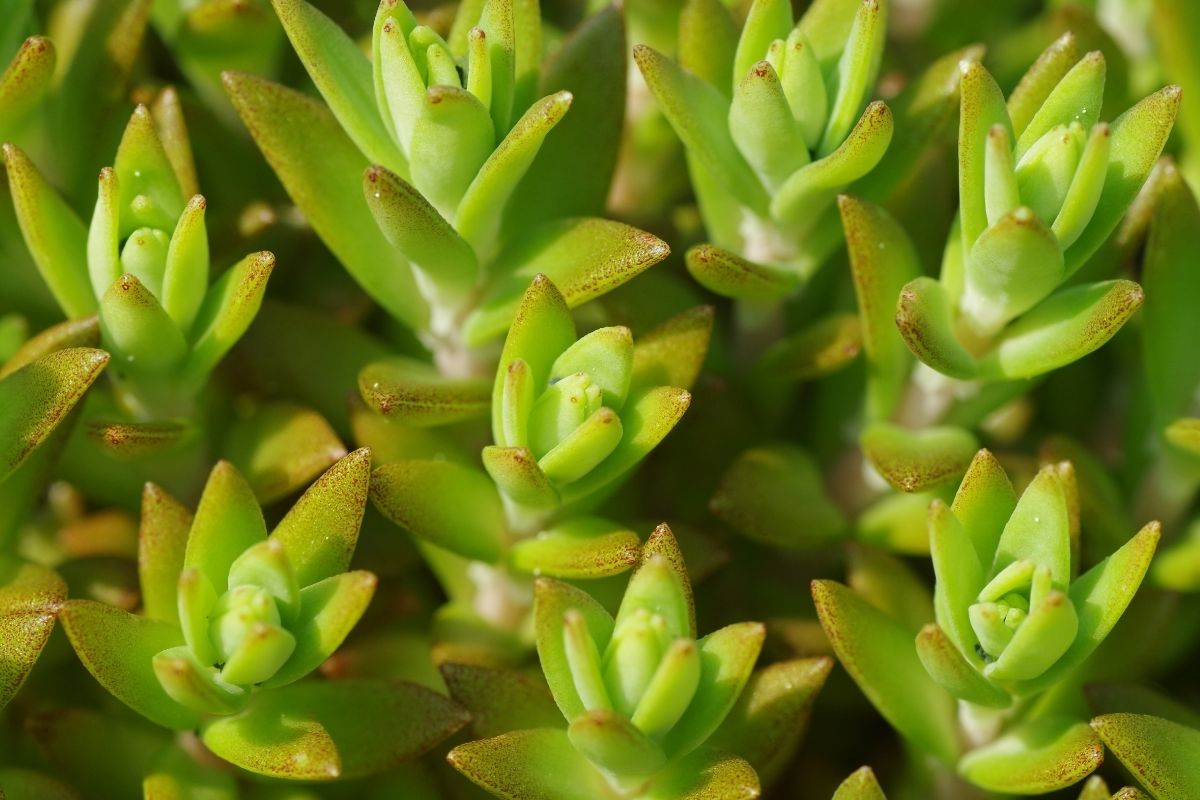
The final plant on our bright green list is commonly famous as lemon coral or Mexican stonecrop.
It’s another flowering plant that boasts a fairly unique aesthetic appearance, growing in almost spiky-looking stalks out of the soil.
It doesn’t take up much space in the soil and one can easily grow it in a pot for decoration indoors. However, it will feel just as at home in a backyard environment and will eventually form a large, bushy mass.
The color of this plant might not be as distinctively green as others on our list. And does grow into tinges of yellow more often than green.
However, that doesn’t stop it from being a delightful plant to have around!
Final Thoughts
As you can probably imagine, there are thousands of different bright green-colored plants in the natural world and we simply didn’t have the space to include them all.
However, we’re pretty sure there are some plants on this list that will bring a great splash of color to your home or backyard!
Editor’s Recommendations
19 Different Types Of Brown Plants (Including Photos)







